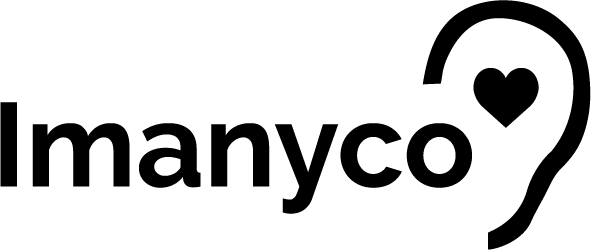A Deaf Girl in a Hearing World: Meet the Founder
I want to introduce you all to someone I’ve known for 24 years. She was born hard of hearing, but no one knew about her hearing disability until she was eight or nine years old.
At ten, this girl was introduced to the world of sound with hearing aids.
The first sound she heard in her life was the sound of an air conditioner and two people talking in a room. One of them said, “Yes, she has so much hair on her head.” Then another voice said, “Okay, now can you hear me, Saida?”
At that moment, she realized that each person has a unique voice of their own—one of these was the voice of her mother—and that everything has a sound.
Hearing aids gave her the opportunity to hear and to listen.
Sadly, by the time she was 12, her hearing levels began to decrease. She started feeling disconnected from the world around her. She asked people questions that seemed a little strange, even though they seemed reasonable to her.
She wanted to know things like:
How do you know when someone has called your name?
How do you know it’s your name?
How do you know what someone is saying when they are speaking?
How do you know if they say something funny?
How do you know when to laugh?
Her questions remained unanswered for many years.
One day, she told her father, “When I wear my hearing aids, I can hear your voice when you speak, but I can’t understand what you’re saying.”
At 16, she became deaf.
From age 18 until now, she has been searching for resources and assistive technology to aid her with communication. But she never found one that met her needs.
That girl is me.
Over the past few years, I’ve learned that the world I live in is a hearing world—the majority of people are equipped with a communication tool that I don’t have, so having a hearing disability means you’re disabled, at least according to these standards. Being deaf means I’ll have more challenges to overcome than other people because our world isn’t built for my specific abilities.
Those who can hear could never understand the amount of effort that goes into accessing a conversation. Even hearing aids, cochlear implants, and American Sign Language (ASL) cannot fully eliminate the struggle.
For the hearing-loss community, understanding verbal communication means guessing every word of a conversation by watching people’s lips and mouth as they talk. We miss tidbits of conversation and worry about things like the amount of light in an environment (we can’t “hear” in the dark!), facial hair, accent, and so on.
That’s why I came up with Koda, an app that displays conversation visibly by separately transcribing each speaker’s words and color-coding them to make it easier to identify who is saying what. Though other transcription apps are available, Comunify is the first of its kind.
I created Koda to provide people like me easier access to the conversations happening all around them. Using modern technology like this, the hard-of-hearing community can better participate in (and contribute to) the world we’re all living in.
Editor: Skye Sherman
